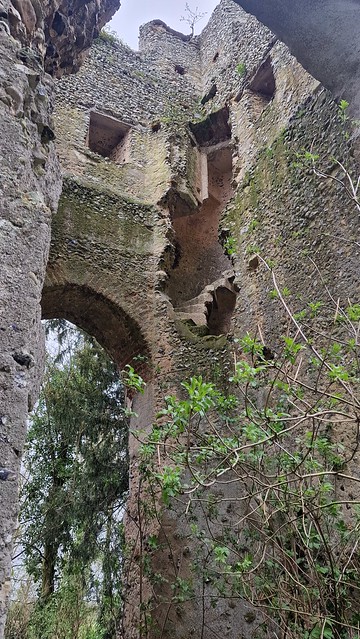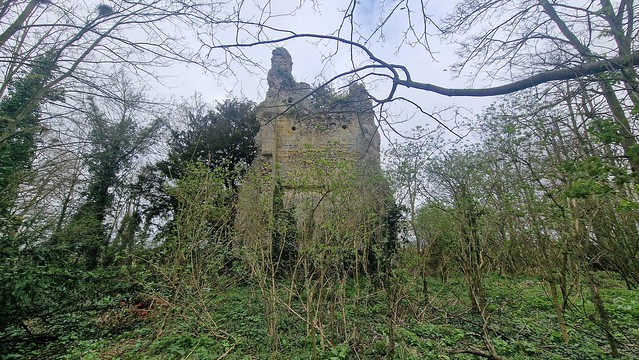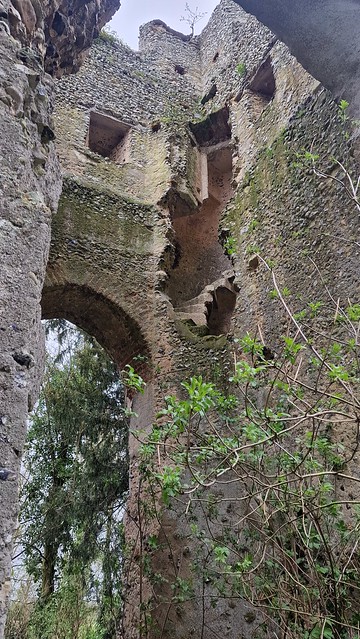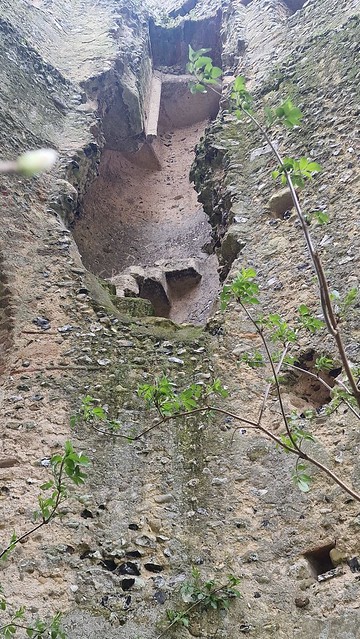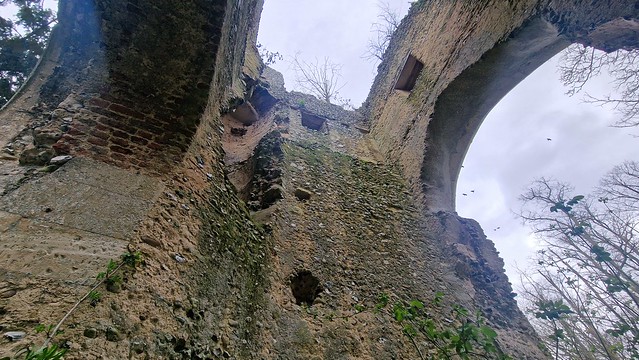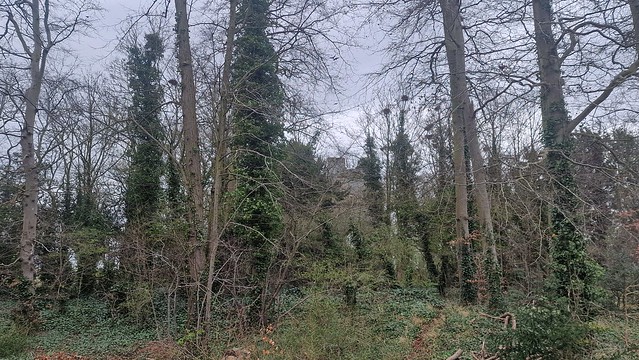Ashley – All Saints Church (Silverley)
There’s something quite meaningful about visiting a church which is effectively slowly falling down. Long gone are the sounds of people getting married, the sadness of funerals and the joy (well, generally) of a baby being Christened. This church is near to the village of Ashley, but it’s actually the former parish church of the long gone village of Silverley.
Only the tower remains and that’s in a sub-optimal condition to say the least. The nave, the churchyard and any other remnants of the building’s history have long since gone.
The former church is especially intriguing as the former staircase to the higher levels of the tower is still visible.
I wonder who the last person was to successfully walk up these stairs and whether they had any indication that they would be the last to do so. It’s sealed at the bottom now to prevents any local pesky kids (or adults) from trying to climb up and promptly falling down or something similar.
It has been solidly built to ensure that it stays in even this condition.
It’s partly hidden from the road and I only knew that it was there because of Google Maps indicating that it was there.
There are obviously a whole heap of stories about a church in this condition and it relates to the whole situation with Ashley and Silverley being joint parishes. Silverley was once the larger of the two settlements, but the two villages merged and the last burial at All Saints was in 1564 with nearly nothing of Silverley left today. Not that this helped Ashley, as both churches closed in the sixteenth century and the present church in the village is Victorian. But, once again, I digress and I’ll jump forwards a bit in the story.
There was considerable anger in 1971 when some of the remaining part of the church was demolished. H.E. Thistle of Ousden wrote to the Newmarket Journal noting:
“I was appalled to read in the Journal of the partial destruction of Silverley church tower. It would be bad enough if those responsible for this act of vandalism were under-privileged louts who knew no better, but it seems from the report that those who decided to destroy the tower were people who were in a position to know exactly what they were doing and yet went ahead in cold blood to demolish a very beautiful and ancient landmark.”
The correspondent was rightly angry, the church’s destruction was backed by Bidwells and with the accidental approval of the Department of the Environment who it seems got a bit muddled up. That means it’s perhaps possible to partly blame Peter Walker, the then Secretary of State, but it appears to have been something of an administrative error that five tonnes of stone was carted away. The land agents locally claimed that the building was structurally unsafe, but this was proven to be something of an untruth when the demolition team struggled to demolish the structure. All very much sub-optimal and an unnecessary destruction of an historic building. It’s fair to say that the actions of Bidwells were a disgrace and showed huge contempt to the local population and the heritage of the building. Even after the controversy, Bidwells said “it’s all really a question of economics”. Twas ever thus……
The church had been listed in August 1959 and so should have been protected, although there’s not a vast amount known about its history. It’s thought to have been constructed primarily in the fourteenth century (although it’s likely that there was a religious building on the site before this) and was in use until the sixteenth century when the village faded away, with the building used for a period as a barn. It was though derelict by the seventeenth century, with likely the tower being the only part used. And thank goodness that villagers in 1971 were able to interrupt the demolition to save at least some of the structure. Unfortunately, today the church is I think on private land and there are no interpretation signs or information about the history of the building and bit by bit the structure is likely to slowly fall apart.

